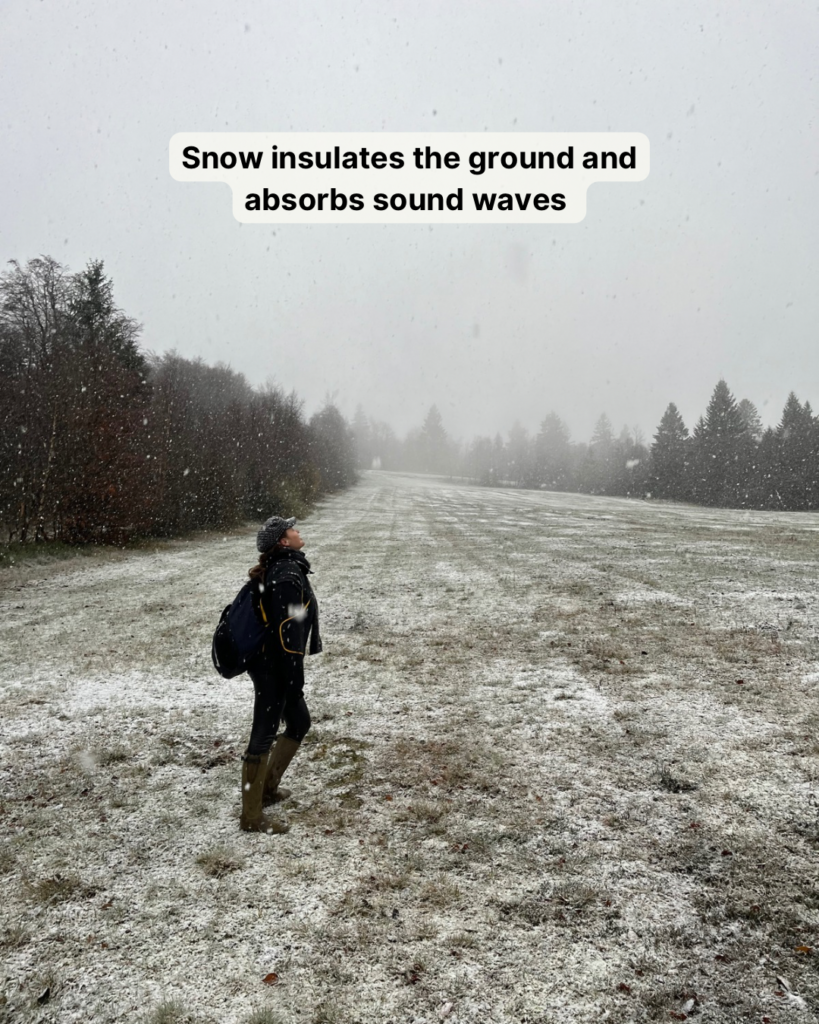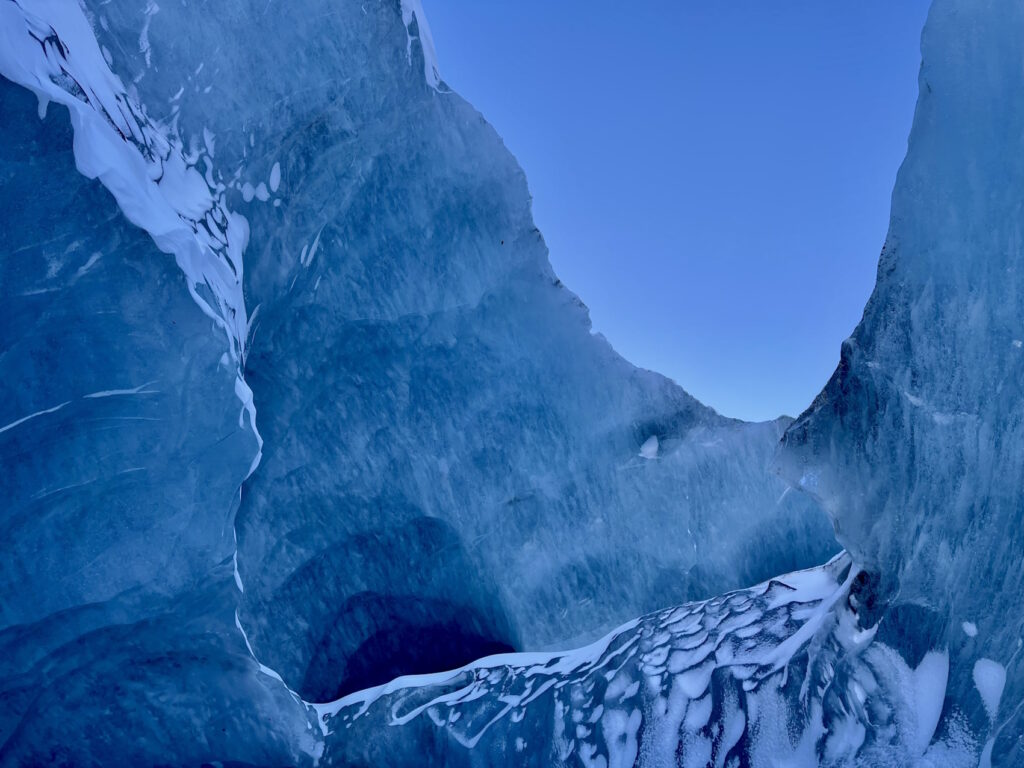When was the last time you truly got your hands dirty—naturally dirty? Research consistently shows that spending time in nature benefits both body and mind, but with our phones constantly within arm’s reach,a genuine connection with nature is becoming increasingly rare.
That’s why I have put together a list of 9 textures waiting for you to explore in the fall/winter forest. It is also a great way to experience the forest if you have a visual disability!
Pocket that phone, sharpen your fine motor skills & discover the power of dirty hands!
📍Epe, Veluwe, The Netherlands | 🖐️ Touch Perception
→ 🪵 Cracked Tree Bark
One of my all-time favorite textures in the forest is tree bark. Did you know that tree bark patterns can be so distinct they can be used to identify different tree species? Yup! Bark is like nature’s fingerprint: each type of tree has its own unique texture, pattern, and story carved into its surface.
Some barks are smooth and silky, like the beech tree, while others are deeply grooved and rugged, such as oak or pine. Touching tree bark isn’t just a tactile experience; it’s an intimate look into the tree’s life. The roughness of deep cracks may tell of weathered storms, while peeling or flaking bark hints at a tree shedding its old layers for new growth.
In my opinion, it’s a showcase of resilience, allowing us to feel the ever-changing yet steady rhythm of the forest.
→ 🍂 Thinning, Papery Leaves
As the days grow shorter and temperatures drop, trees begin their preparation for survival by conserving energy and water. One key step in this process is shedding their leaves, which would otherwise lose too much water through evaporation. Before letting go, however, the trees reabsorb valuable nutrients like chlorophyll—a pigment essential for sugar production and responsible for the leaves’ green color.
Once this nutrient is reclaimed, the leaves transition into vibrant shades of yellow, orange, and red while also becoming noticeably thinner and more papery. This energy-saving strategy allows the trees to endure the harsh winter months and emerge strong in the spring.
I think this smart adaptation strategy can serve as a gentle reminder to reflect on how we can conserve our own energy during challenging times to ensure long-term growth.
→ 🦘Bouncy Soil
Bounce around like a kangaroo! Autumn rains soften the soil, inviting all kinds of growth like moss and mushrooms. The fallen leaves create a springy, bouncy carpet—one that plays a crucial role in feeding the soil.
As these leaves decompose, they release minerals and improve the soil’s structure, helping it absorb more moisture during rains and retain it better during dry spells.
Nothing in nature blooms all year—and neither do we!




→ 🍄 Mushroom Caps
Mushrooms might not win any awards for being the cuddliest forest find, but their slimy texture has an important function! The slick surface helps mushrooms retain moisture, keeping them hydrated as they grow in damp, shady spots. It also helps to fight off microbes and disperse spores.
Touching a mushroom can feel a bit like running your fingers over a soft, squishy sponge—but don’t let the slime fool you! Mushrooms are hardworking recyclers, breaking down dead leaves and logs to nourish the forest floor.
Never underestimate the value of the clean-up crew!
Please make sure the mushroom is safe to touch and wash your hands afterwards
→ 🦌 Animal Tracks
Feel the forest footsteps! Whilst usually invisible to the eye, forest creatures often leave a distinct mark. From the delicate heart-shaped imprints of deer hives to the rounded pads and claw marks of foxes or racoons, each track can tell us what animal might have passed by.
Run your fingers over a set of preserved tracks or press them into soft mud to feel the subtle differences. What is the distance between the steps and which way do they lead? Exploring animal tracks is a great way to connect ourselves to the forest’s hidden life.
Even the tiniest prints leave a great mark on the forest’s ecosystem!
→ 🌾Walking through Tall, Yellow Grass
Fields of gold… if you ask me, one of the most beautiful songs ever written, and we get to lie in them in the fall season! The tall, swaying stalks of golden grass feel smooth yet fragile and breakable—a tactile reminder of transformation. When autumn deepens, grasses dry out, shedding their summer suppleness and preparing for a long ‘winter sleep.’
This change helps the grass conserve energy, while its taller growth makes the most of shorter days by capturing as much sunlight as possible.
Touch the golden sea, and you’ll feel the essence of rest in order to renew!



→ ☁️Fuzzy Moss
Mmm, moss: the velvet of the forest! This fuzzy layer hugs rocks, trees, and soil, but its delicate texture isn’t just comforting for us. Moss works hard behind the scenes, helping forests to soak up rainfall and retain soil moisture.
With their tiny, densely packed, hair-like leaves, mosses have an impressive surface area that allows them to absorb water directly from the air—no roots needed—and capture sunlight even in the shadiest spots. This adaptability helps moss thrive where other plants might struggle, creating a nurturing environment for forest life.
Run your fingers gently over its springy surface to feel the importance of teamwork!
→ ❄️Fluffy Snow
Last but not least, the most iconic texture of the winter forest (given the right climate)t: snow! Fresh snow feels powdery and light, like tiny frozen feathers slipping through your fingers. But what makes it so special is its ability to transform the world around it.
Each snowflake has a unique structure, and when billions come together, they form a quilt that insulates the ground below. This helps protect plants, animals, and even soil from freezing temperatures. Snow also absorbs sound and reflects light, brightening the darkest winter days and creating a crisp, magical atmosphere.
Even if you’re not a fan of the cold, this soft, sparkling blanket can still warm your heart.
→ 🫂 The Touch of your Company
Are you heading into the forest with a companion? Double your feel-good sensations by making deliberate contact with one another, whether it’s holding hands, a hug or a simple brush against a friend’s arm. The calm of the forest enhances our connection, making every gesture more meaningful.
Our skin is covered with special nerve fibers —called C-tactile afferents—designed to sense slow, gentle touch. Stimulation of these fibers will send signals to a brain area responsible for the emotional and affective aspects of sensory input. This is part of why gentle touch can evoke feelings of comfort or pleasure.
It’s nature’s way of helping us bond—an experience made even richer by the serene forest setting.
And that’s a wrap! 9 textures that tell the inspiring story of the fall/winter forest. What textures would you add to round 2? And what type of forest grows where you live?
Share your thoughts—I’d love to hear about your local habitat!
With love,
Marie




